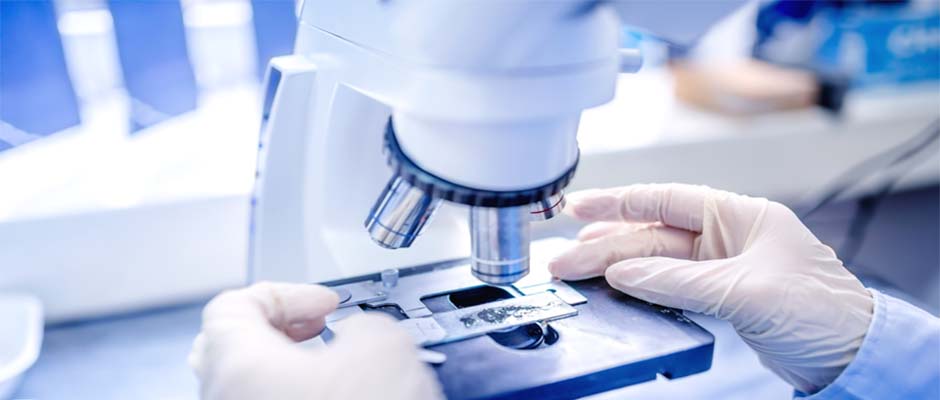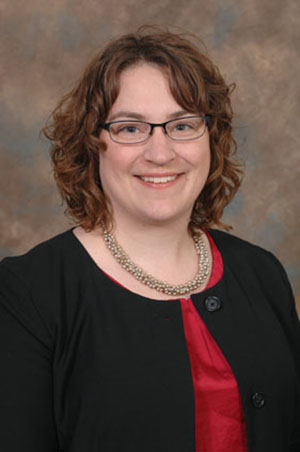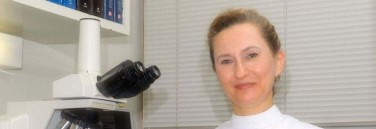
The Blossom reached out to researcher Katherine A. Burns, Ph.D. Assistant Professor Department of Environmental Health University of Cincinnati College of Medicine to talk with her about her work in basic science research. Dr. Burns, who has received research funding from the Endometriosis Foundation of America (EndoFound) in 2017 and 2018, is presenting at the Endometriosis Foundation of America 10th Annual Medical Conference - Endometriosis 2019 International Masters Symposium "Targeting Inflammation: From Biomarkers to Precision Surgery." Her presentation is titled Environmental Immunotoxicants: Do They Affect the Development of Endometriosis?

1. Why do you want to work in clinical research and why did you become a scientist?
When I was about 8, I told my mother that I was going to use microscopes and work at NIH. I knew then that I wanted to be a scientist. I received a Fisher-Price microscope for Christmas. My mother was a stay-at-home mom, but she was also trained as a biophysicist. As children, we did all kinds of experiments together, from growing fungus in the dark on petri dishes under the cabinets, to growing plants with different pH liquids, to showing how bad tobacco use is as an attempt to get my 5th grade teacher to stop smoking.
In college, I worked in a laboratory that studied cell cycle regulation in fungi. Dr. Steven James called us the “funguy and fungal lab.” I started graduate school thinking I wanted to do tumor biology research, but as an undergrad, I was diagnosed with endometriosis and had two surgeries to treat it. The doctors didn’t really know what it was, what to do with it or for it, or how to respond but to prescribe me pain medication. In graduate school, I had three more surgeries, but for one of them, I was the research—I was in a clinical trial at NIH. I got to see clinical translational research first hand. Dr. Pamela Stratton who lead the study, in my mind, had one of the coolest jobs. I continued on only to have treatments to chemically induce menopause, tests for IBS/Celiac’s Disease, trips to pain clinics, hypnosis, acupuncture, radical diet changes, etc.… I decided I was going to study this awful disease which I felt had been shoved under the rug because it doesn’t kill people and because it is mainly a women’s disease and is not well known. I wanted to take on this disease to study it at the basic science level with dreams that our research will lead to changes clinically or environmentally.
For my postdoctoral research, I went to the National Institute of Environmental Health Sciences and was mentored by a world-leading expert in estrogen biology, Dr. Kenneth Korach. My dream as an eight year old was realized, I was at NIH. I used some fantastically amazing microscopes (none said Fisher-Price), and I was studying endometriosis! During my time at NIEHS, I was also involved in studies to understand how environmental toxicants are endocrine disruptors that affect the estrogen receptor (ER). This interaction led me to study the effects of environmental toxicants on endometriosis development and potentiation.
Click Here to Apply
2. What is your favorite aspect of your research and what are the discoveries that have lead up to your current work?
My favorite aspect of our research is to ask questions—my sister says I ask too many questions and gives me a limit. I enjoy designing experiments that answer these questions and lead to more questions. When I was developing the mouse model we use, I thought for sure I was doing something wrong because the same number of lesions developed regardless of the amount of estrogen. Endometriosis articles always begin with “endometriosis is an estrogen-dependent disease”; this is not the whole story. We found that the initiation of disease requires the immune system and the potentiation of disease requires estrogen. This makes sense because most of the therapies for endometriosis are hormonally associated and they do not cure disease, but merely put it into a quiescent state. This finding encouraged us to continue to study the early stages of the disease and also to integrate how the immune system may be impacted by environmental toxicants that may lead to increased disease incidence or disease burden.
3. The origin story: How did you come up with this hypothesis & what got you interested?
As was mentioned above, I did research on environmental toxicants at NIEHS. We initially studied these compounds in vitro, but I wanted to ask what they did in an in vivo disease model system. There are environmental toxicants that are endocrine disruptors, immunotoxicants, or both. My laboratory is using both to examine how these environmental toxicants can impact disease.
4. Why is your research important? What are the possible real-world applications?
It is imperative that people and our government be educated about this little-known disease that causes havoc (such as infertility and intense pain) for many women. We are studying the cell types in the early stage of disease and the environmental chemicals that may make the disease worse. I hope that our research will enable us to target the early stage of this disease therapeutically. And I also hope that if we discover environmental toxicants that affect disease, we can advise women and girls to not use those products.
5. What kind of response have you gotten to your research/findings?
I get a variety of responses when I tell people what my laboratory does. Some are, “what is endometriosis?” and then the other extreme is a young woman sharing with me her plight with endometriosis. This disease negatively affects so many and their families. Besides the pain and surgeries women with endometriosis must endure, women have shared with me how endometriosis negatively impacts their ability to have a family, interact with their children if they are lucky enough to have them, their day to day home and work lives, their relationship with their husband, their having to constantly cancel plans, their curling up in the fetal position, how much it hurts to have a bowel movement, and I could continue. Many people ask about environmental chemicals and question how we are exposed to them. This is raising awareness for endometriosis and what we are exposed to daily.

6. What question or challenge were you setting out to address when you started this work?
We are asking how an environmental endocrine disruptor and immunotoxicant affect the development and severity of endometriosis.
7. So the big picture: “What's your assessment of the current state of endometriosis?
I am thrilled to be a part of the Endometriosis Foundation of America (EndoFound) and to have research funding from the EndoFound. EndoFound is shedding such a light on endometriosis and allowing women to have a voice. I’ve had so many people come to me having seen commercials on TV regarding endometriosis. The disease is being recognized; however, there is still a long way to go to understand what this disease is, how we can treat it, and how we can prevent it from happening in so many young women. I am glad to share my story whenever I can, but I lived for years thinking I was the only one with this disease. I am proud of EndoFound for giving awareness to young girls to help them understand that living in pain is not normal.
8. What legislation would you change to improve how science in your field is done?
I’m not sure I would change legislation, but I would highly encourage increased funding for gynecological diseases (i.e., endometriosis and fibroids). I was thrilled to see that the Department of Defense is now accepting grants for endometriosis research and recognizing how this disease would affect a soldier and her family. Collaborative research initiatives are important for understanding disease, and I would be delighted to see a large endometriosis biobank of samples for researchers to use to study disease.
9. What are the negatives to your research? Who disagrees with your conclusions? Is there controversy in this area or other schools of thought?
The drawback of basic science research is that we have to use model systems. The animals are being dosed with only one chemical at a time and with a defined dose. Humans are exposed to many chemicals every day, and the ranges of doses are not fully known. The controversy would be that consumer products make money and businesses don’t like to lose money, but we have not run into any of these issues yet.
10. What do you like to do when you aren't working on research?
Sleep. I find that there is never enough sleep—having chronic endometriosis pain is exhausting. I also like to cook, read, see musical theater, and to make pottery. I keep saying I’m going to put a sink in my basement and finally get a pottery wheel, but grant writing for money to study endometriosis takes precedence.
Dr. Burns' studies funded by EndoFound:
The environmental contaminant di-(2-ethylhexyl)phthalate (DEHP) Induces Endometriosis (2017)









